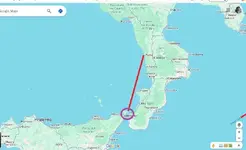This is where it gets hazy.
The Goths became foederati of Rome, and wanted to restore the Roman order against the hordes of Vandals, Alans and Suebi. The Western Roman Empire fell in 476 AD
Therefore, the Visigoths believed they had the right to take the territories that Rome had promised in Hispania in exchange for restoring the Roman order. Under the Goth King Euric who eliminated the status of foederati. A triumphal advance of the Visigoths began. Alarmed at Visigoth expansion from Aquitania after victory over the Gallo-Roman and Breton armies at Déols in 469, Western Emperor Anthemius sent a fresh army across the Alps against Euric, who was besieging Arles. The Roman army was crushed in the Battle of Arles nearby and Euric then captured Arles and secured much of southern Gaul.
Sometimes referred to as the Regnum Tolosae or Kingdom of Toulouse after its capital Toulouse in modern historiography, the Visigothic kingdom lost much of its territory in Gaul to the Franks in the early 6th century, save the narrow coastal strip of Septimania. The kingdom of the 6th and 7th centuries is sometimes called the Regnum Toletanum or Kingdom of Toledo after the new capital of Toledo in Hispania. A civil war starting in 549 resulted in an invitation from the Visigoth Athanagild, who had usurped the kingship, to the Byzantine emperor Justinian I to send soldiers to his assistance.
King Athanagild won his war, but the Byzantines took over Cartagena and a good deal of southern Hispania, until 624 when Swinthila expelled the last Byzantine garrisons from the peninsula, occupying Orcelis, which the Visigoths called Aurariola (today Orihuela in the Province of Alicante). Starting in the 570s Athanagild's brother Liuvigild compensated for this loss by conquering the Kingdom of the Suebi in Gallaecia (corresponding roughly to present-day Galicia and the northern part of Portugal) and annexing it, and by repeated campaigns against the Basques.
The ethnic distinction between the Hispano-Roman population and the Visigoths had largely disappeared by this time (the Gothic language lost its last and probably already declining function as a church language when the Visigoths renounced Arianism in 589).
This newfound unity found expression in increasingly severe persecution of outsiders, especially the Jews. The Visigothic Code, completed in 654, abolished the old tradition of having different laws for Hispano-Romans and for Visigoths. The 7th century saw many civil wars between factions of the aristocracy. Despite good records left by contemporary bishops, such as Isidore and Leander of Seville, it becomes increasingly difficult to distinguish Goths from Hispano-Romans, as the two became inextricably intertwined.
Despite these civil wars, by 625 AD the Visigoths had succeeded in expelling the Byzantines from Hispania and had established a foothold at the port of Ceuta in Africa. Most of the Visigothic Kingdom was conquered by Umayyad troops from North Africa in 711 to 719, with only the northern reaches of Hispania.
This is why the above treasure was believed to be part of the later 711 end of the expansion of Visgothic kingdom that was fluid moving over time across Europe. So this why it s hard to track down king Alaric treasure. was the treasure merged over time with following kings in their wars?see map below these kingdoms moved like snails across the continent.
One theory with treasure of Jewish temple treasure looted by the Roman remained in Rome until the was quite possible the Jewish temple treasure was moved to France. From 1309 to 1376 the the popes in Rome moved Avignon in France many religious orders followed. There is a Carthusian monastery in France that may of been a hiding place of alleged earlier looted treasures from Rome. The church over time could acquired visgothic treasure in Rome until the pope moved to Avignon.
The Black Death was present in France between 1347 and 1352. The bubonic plague pandemic, known as the Black Death, reached France by ship from Italy to Marseille in November 1347. From Marseille, the Black Death spread first through Southern France, and then continued outwards to Northern France.
The Avignon Papacy was the period from 1309 to 1376 during which seven successive popes resided in Avignon (at the time within the Kingdom of Arles, part of the Holy Roman Empire, now part of France) rather than in Rome (now the capital of Italy). The situation arose from the conflict between the papacy and the French crown, culminating in the death of Pope Boniface VIII after his arrest and maltreatment by Philip IV of France.
Following the subsequent death of Pope Benedict XI, Philip pressured a deadlocked conclave to elect the Archbishop of Bordeaux as pope Clement V in 1305. Clement refused to move to Rome, and in 1309 he moved his court to the papal enclave at Avignon, where it remained for the next 67 years. This absence from Rome is sometimes referred to as the "Babylonian captivity" of the Papacy.
A total of seven popes reigned at Avignon, all French, and all under the influence of the French Crown. In 1376, Gregory XI abandoned Avignon and moved his court to Rome, arriving in January 1377. After Gregory's death in 1378, deteriorating relations between his successor Urban VI and a faction of cardinals gave rise to the Western Schism.
This started a second line of Avignon popes, subsequently regarded as illegitimate. The last Avignon antipope, Benedict XIII, lost most of his support in 1398, including that of France. After five years besieged by the French, he fled to Perpignan in 1403. The schism ended in 1417 at the Council of Constance.
It is quite possible that during this period of termoil any treasures of the pope was held in various orders of Avigon. Some gothic treasure perhaps of king alrick treasure and even parts of Jewish temple treasures. One thing there was srage story of treasure being held at carthusian monestry at Avigon. that it vacated in a hurry by Carthusian order durig the french revolution in 1792. Did the monks attempt to transport treasure to Spain?
We just do not know but it would be interesting to see if there was any information in Carthusian order archives and records?
Clear with Italian archeologist their atempts at finding The legendary treasure of King Alaric, along with his tomb, has never been definitively found, despite numerous searches and archaeological investigations. The legend claims Alaric was buried with immense wealth, including items looted from Rome, in the bed of the Busento River in Italy. While there have been many attempts to locate the treasure, including modern technology and official searches, the location remains a mystery.
Crow






